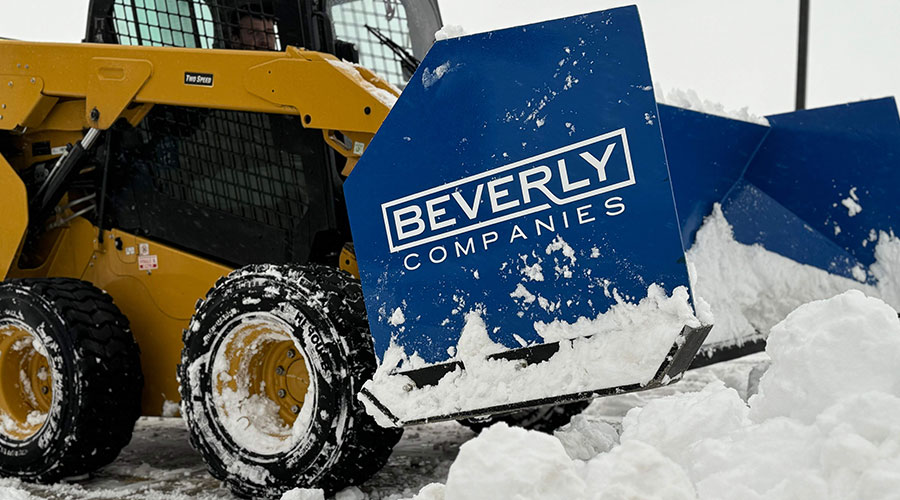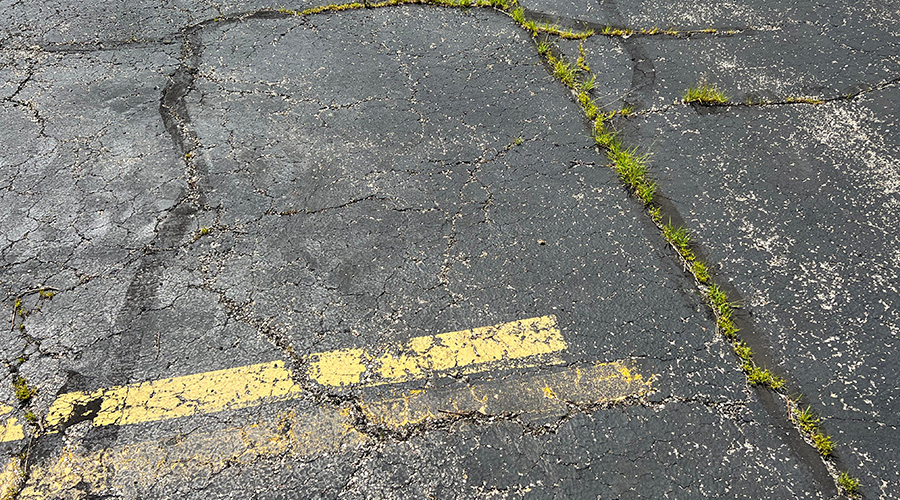6 Sustainable Snow Removal Strategies
Sustainable snow removal isn’t just good PR, it’s practical risk management and cost control.
By Tom Marsan, Contributing Writer
Snow removal keeps properties safe and accessible, but it can carry a hefty environmental price tag. Gas powered equipment emits pollution, salt contaminates waterways, and inefficient routing burns fuel and money. The good news is, modern sustainable practices not only reduce environmental harm, but also improve operational efficiency and cut long-term costs.
There are many practical ways for facilities managers to make snow operations more environmentally responsible this winter. If you’re hiring a snow removal contractor, be sure to discuss their sustainability initiatives and equipment choices as well.
1. Cut Emissions with Modern Equipment
Older snowblowers and plow trucks are surprisingly dirty. A two-stroke snowblower can emit as much pollution in one hour as a car driving up to 300 miles, according to the U.S. EPA. Newer four-stroke, hybrid, or fully electric models slash those emissions dramatically by 70–90% while also using less fuel.
Electric snow equipment is becoming viable for sidewalks, campuses, and tight spaces. Larger contractors are investing in Tier 4 diesel plows and hybrid trucks. Some states, like California, are even phasing out small gas engines entirely.
Choosing vendors who upgrade their fleets can significantly lower your facility’s wintertime carbon footprint and improve reliability. Ask snow contractors what percentage of their fleet uses low-emission or electric equipment, and how old their average machines are.
2. Optimize Routes to Save Fuel and Time
Plow trucks burn a lot of diesel, especially when they drive inefficient routes. GPS-based route optimization can reduce both fuel use and labor hours by minimizing backtracking and idling. Real-time tracking also ensures no area is missed and allows managers to reroute crews quickly during storms.
Efficient routing isn’t just sustainable. It keeps your lots and walkways clear faster, reducing slip-and-fall liability. Look for vendors using modern fleet management or GPS routing systems, and ask how they plan for emergencies to avoid wasted trips.
3. Rethink Salt and De-icers
Traditional rock salt (sodium chloride) is cheap but environmentally costly. It runs into soil and waterways, increasing salinity and harming ecosystems. Over decades, chloride pollution has risen in more than 80% of urban streams, and salt corrosion costs U.S. infrastructure billions annually.
Brine pretreatment can be a better option for properties. Spraying salt brine before storms can cut salt use by 20–30% while preventing ice from bonding to pavement.
Alternatives to rock salt also include calcium magnesium acetate (CMA), potassium acetate, or beet-based additives that are less harmful to plants and waterways.
Over-salting is common and wasteful. Calibrated spreaders ensure only the needed amount is applied.
4. Reduce Travel Through Smart Logistics
Every extra trip to refill salt or fuel burns time and emissions. Storing materials on-site or at nearby satellite yards can dramatically reduce travel. Pre-positioning salt bins, brine tanks, or fuel during storms speeds up response and minimizes idling.
For larger properties or portfolios, this can be a game-changer. Especially during regional storms when supply chains are strained. Ask your snow provider if they stage materials or equipment on-site to reduce travel and improve response times.
5. Maintain Equipment and Train Crews
Well-maintained machines run cleaner, use less fuel, and break down less. Regular tune-ups, proper tire inflation, and prompt repairs all matter. Spreaders should be calibrated at least once a season. Poorly set units can apply two to three times the necessary salt.
Operator behavior counts, too. Training crews to reduce idling, avoid over-application, and plow efficiently can significantly lower environmental impact. Verify that your contractor has a maintenance schedule and crew training program focused on efficiency and sustainability.
6. Leverage Standards and Certifications
Sustainability in snow removal is gaining structure. Programs like the Sustainable Winter Management (SWiM) standard offer clear best practices for salt reduction, equipment maintenance, and record-keeping. Certified contractors often reduce salt use by 20–40% while maintaining service levels.
Green SnowPro (used in some states) and similar programs teach contractors how to protect water quality through smarter practices. Working with certified vendors can support your facility’s ESG goals and reduce liability.
Why It Matters
Sustainable snow removal isn’t just good PR, it’s practical risk management and cost control. Cleaner equipment and routing reduce your winter carbon footprint. Less salt means less damage to soils, plants, and infrastructure. And finally, Efficient operations cut fuel, material, and maintenance costs over time.
Facilities managers don’t have to choose between safety and sustainability. By modernizing equipment, optimizing operations, and rethinking de-icing strategies, you can make winter maintenance cleaner, more efficient, and often cheaper in the long run.
Sustainable snow removal is no longer a niche idea, it’s quickly becoming the industry standard.
Tom Marsan is a certified snow professional who has been in the landscaping and snow removal industry for about two decades. He is an active member of ILCA and SIMA and is currently the general manager at Beverly Companies in Chicagoland.
Related Topics:












